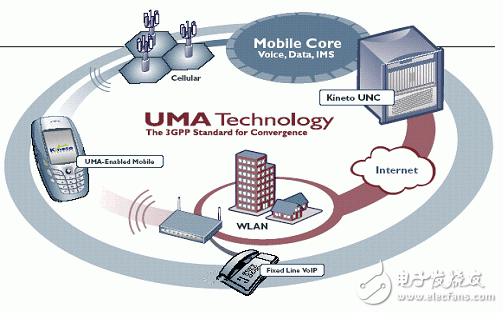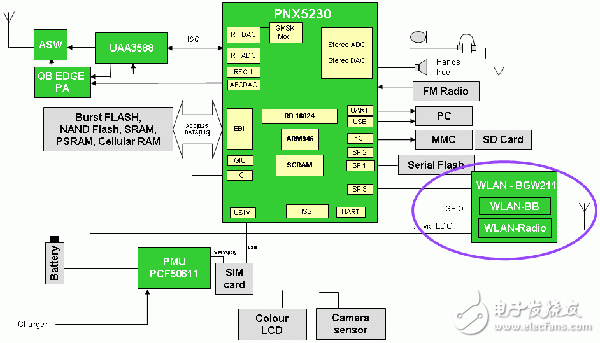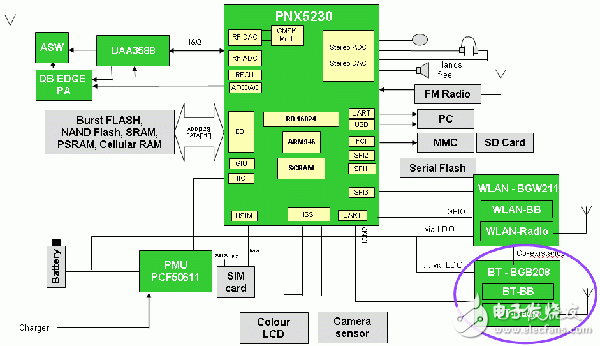Fixed network and mobile convergence (FMC) is imperative, that is, mobile phones can seamlessly switch between mobile networks and unlicensed wireless systems (such as Wi-Fi networks or Bluetooth connections). First, there is a need for consumers to reduce call costs by using VoIP or fixed line phones. Second, the number of operators implementing triple-play is increasing. For them, fixed-line and mobile convergence is both a selling point and a source of profit – no matter what calling method they use. Make money. Service providers and device manufacturers have begun to work closely together to develop standards for full network convergence.
In the early days, the main problem with Wi-Fi phones was that Wi-Fi was completely independent of the mobile network. Mobile operators initially saw Wi-Fi as a threat because they could not profit from it, resulting in a double loss. Since Wi-Fi cannot be seamlessly integrated into the user experience, users need to "activate" the Wi-Fi network. At the same time, due to the lack of technology to seamlessly integrate Wi-Fi with mobile networks, users need to enable both GSM and Wi-Fi at the same time. That is, when users use Wi-Fi, mobile operators also need to continue to provide services through GSM, resulting in additional Power consumption, Wi-Fi user experience is also not satisfactory.
Since then, operators and equipment vendors have developed technologies that provide mobile voice, data and IMS services over Wi-Fi and IP, enhancing Wi-Fi's "friendship" with mobile operators. Today's dual-mode phones can use Wi-Fi without having to turn on GSM, and all voice and data services can be delivered over IP without the need for a GSM network. This technology eventually led to the Universal Access Network (GAN) specification, the release of the past Unlicensed Mobile Access (UMA), which is now the standard for 3GPP.
Power consumption is the key to achieving FMCDespite the demand from consumers, there is still considerable challenge to bring FMC to the mass market, mainly from battery technology. In the past decade, significant advances have been made in the development of batteries with higher densities than lithium-ion batteries. Consumer demand for ultra-thin mobile phones has led to further reductions in battery size. At the same time, the standard battery power value of mobile phones is actually much smaller than that of previous generation mobile phones, generally 650mAh instead of 1000mAh. So, how to reduce the power consumption of mobile phones by 30% without affecting standby and talk time has become a major challenge for chip manufacturers. FMC phones (commonly referred to as dual-mode phones) must support two or three wireless devices at the same time, and consume more power. Therefore, it is also expected that the standby time and talk time indicators of the first FMC mobile phone are not high. UMA can significantly improve the battery performance of dual-mode phones, improve the consumer experience, and make mobile service providers profitable, thus becoming a win-win solution.
The second major problem facing early Wi-Fi handsets was that when wireless (WLAN) modules were used in PCs and other AC-powered computer peripherals, power consumption was not a concern, but when used in mobile phones, Power consumption issues are highlighted. This means that in some cases, the standby time of such a mobile phone is only half a day, which is one of the reasons why many analysts believe that the future of the FMC market is uncertain.
Fortunately, the latest Samsung UMA dual-mode phone (based on NXP Semiconductors' mobile phone platform) has changed this situation. It has effectively increased standby and talk time, prompting analysts to rethink this market. “Given the standby time of Samsung mobile phones (based on NXP platform) in Wi-Fi mode, some companies in the industry (including us) are preparing to reconsider dual-mode Wi-Fi/cellular handsets.†July 2007 SignalsResearchGroup, LLC CEO Michael W. Thelander pointed out in his report.

Figure 1: UMA system
Convergence of mobile phone platform developmentSince the launch of the UMA mobile phone, there have been some initial experiences regarding its features, power consumption and development.
First generation FMC mobile phoneThese phones typically integrate a WLAN subsystem in the mobile platform. Both systems are completely independent and are in a power-saving mode most of the time, especially in idle mode. The obvious benefit of having only one system operating at a time (such as UMA/GAN) in a FMC system is that the call will be rerouted and handed over to the currently active system, so that another system can be shut down. If the FMC scheme integrates VoIP (usually SIP based) on the WLAN and uses it in parallel with the cellular system (GSM/UMTS), the MMI (Human Machine Interface)/user determines the call routing and answering mode, which does not have the above advantages.

Figure 2: The first generation platform architecture of the converged mobile phone.
Second generation fusion mobile phoneAs more and more users use Bluetooth headsets, second-generation converged phones generally integrate Bluetooth (BT) functionality. This type of handset integrates and coordinates between three RF systems: GSM and BT, as well as GSM and WLAN, work together due to the use of cooperative working filters. BT/WLAN share the same frequency band, and the interference between them is serious. Therefore, complex radio frequency access coordination is required, especially the close coordination between BT and WLANIC.

Figure 3: Converged mobile phone second generation platform
The 7-inch tablet can be used as the golden size of a tablet computer. It is small and portable. It can be used at home and outdoors. You can browse the web, watch videos and play games. It is a household artifact. Although the size of the 7-inch tablet is inclined to the tablet, the function is more inclined to the mobile phone, so it can also be used as a substitute for the mobile phone. Compared with other sized tablets, the 7-inch tablet has obvious advantages in appearance and weight. Both the body size and the body weight have reached a very reasonable amount.
1.In appearance, the 7 inch tablet computer looks like a large-screen mobile phone, or more like a separate LCD screen.
2.In terms of hardware configuration, the 7 inch tablet computer has all the hardware devices of a traditional computer, and has its own unique operating system, compatible with a variety of applications, and has a complete set of computer functions.
3.The 7 inch tablet computer is a miniaturized computer. Compared with traditional desktop computers, tablet computers are mobile and flexible. Compared with Laptops, tablets are smaller and more portable
4.The 7 inch tablet is a digital notebook with digital ink function. In daily use, you can use the tablet computer like an ordinary notebook, take notes anytime and anywhere, and leave your own notes in electronic texts and documents.
7 Inches Tablet Pc,Quad Core Tablet 7 Inch,7 Inch Gaming Tablet,Supersonic Tablet 7 Inch
Jingjiang Gisen Technology Co.,Ltd , https://www.gisentech.com